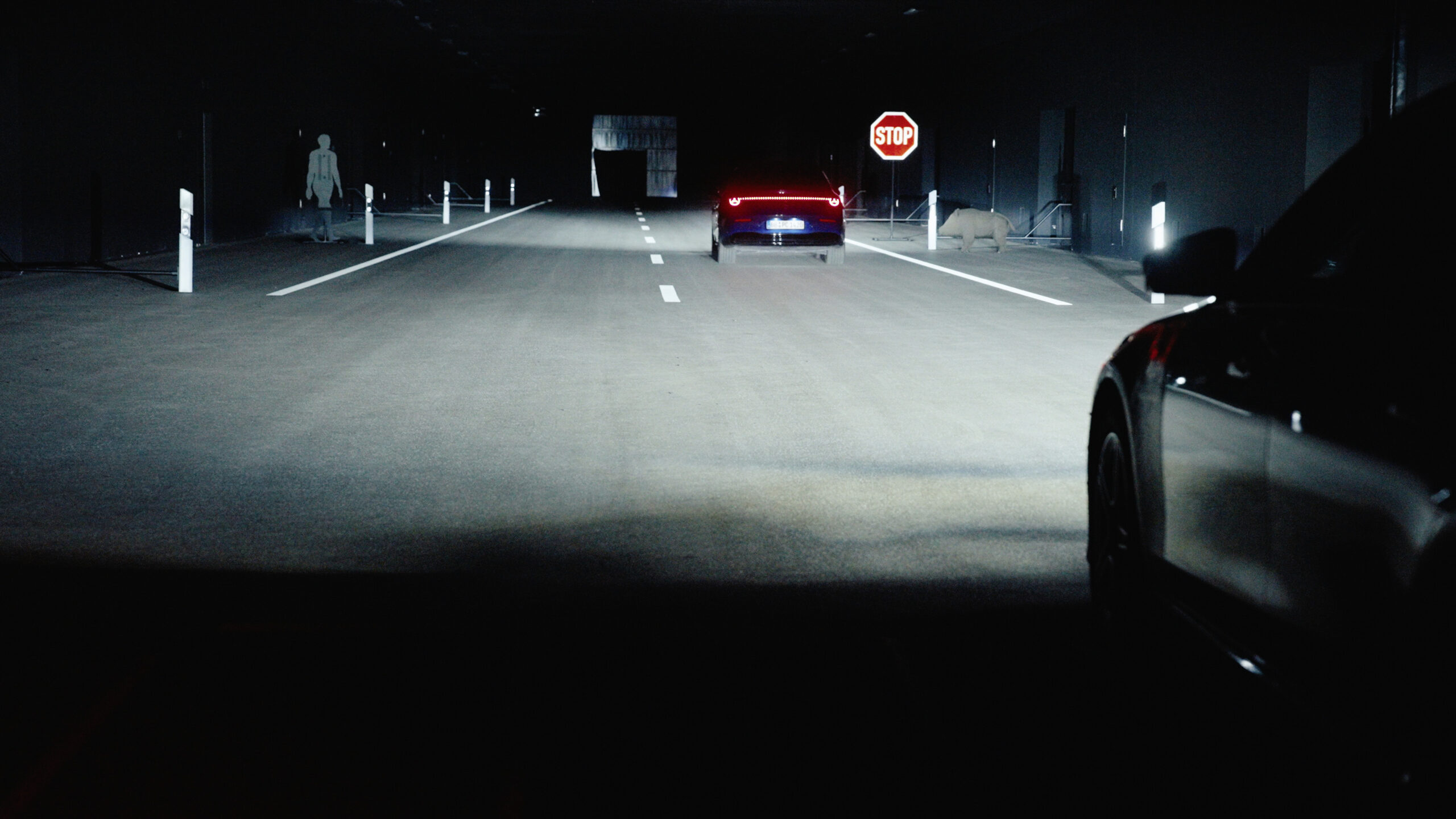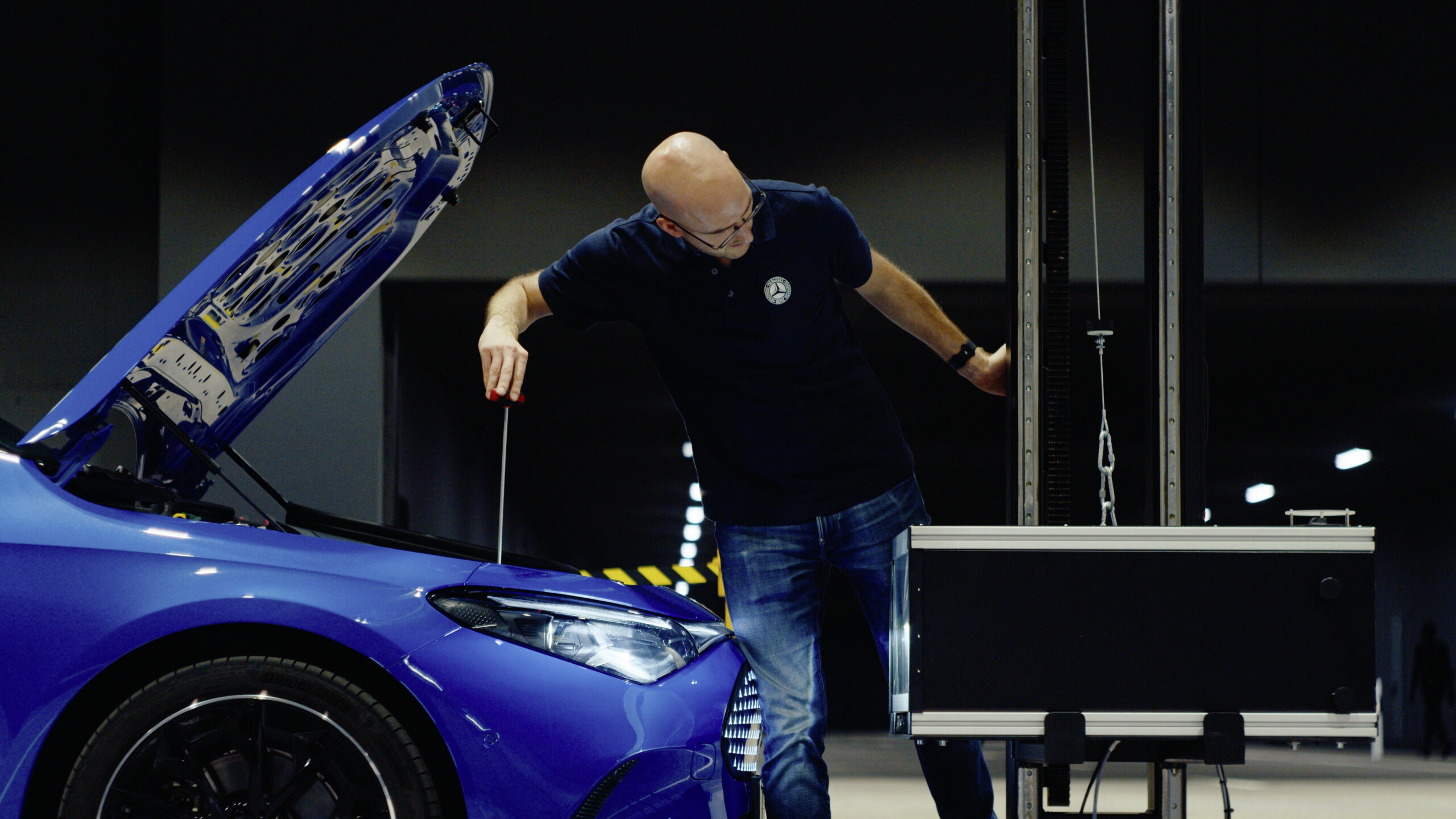Recently, Mercedes-Benz unveiled its new €10.5m (US$12.3m) light testing tunnel at Immendingen to the media, giving ATTI a chance to explore the facility firsthand
“When we made the plans for this new testing center here, it was clear we needed a country road that is dark during the day and night-time,” said Stefan Töpfer, head of light systems. “It was clear we need a country road that is dark during the day and night time.”
That simple goal – to recreate a stretch of unlit countryside inside a building – drove every design decision that followed in the development of the new facility. At 135m long and 14m wide, the tunnel is large enough to replicate the full beam reach of a vehicle’s headlights, enabling engineers to study how light behaves at different heights, angles and intensities.
“The range of a low beam light distribution is between 65m and 80m, depending on the mounting of the headlamp,” explained Töpfer. “The higher the headlamp, the more the range – this is due to legislation. For motorway use, we go up to roughly 135m. That’s why we chose that exact length for the building because we need to be able to evaluate the entire beam.”
Asphalt that pretends to be old
At first glance, the road surface looks standard. But beneath the tires lies one of the tunnel’s most unusual engineering challenges.
“It looks like normal asphalt, but there are two very special things about it,” Töpfer said. “It’s harder than normal asphalt to avoid sink marks. The downside is that it’s not frost-resistant. The second thing – and this was more challenging – is that new asphalt is deep black and absorbs nearly everything that comes from the light, so you can’t use it for evaluation. So, the goal was to build a used road within a completely new building.”
Recreating that “used” look meant simulating years of sunlight, rainfall and vehicle wear, without ever driving cars through the tunnel. “We did many investigations,” he continued. “Normally outside you have sun exposure, you have rain, and you have hundreds or thousands of vehicles traveling the road every day. We couldn’t just open this facility and drive back and forth to age it naturally.”
Instead, engineers performed dozens of trials, testing different artificial aging methods. “Finally what we came up with was a grinding machine,” he said. “We took off the upper layer of this completely new asphalt so the small stones became visible, and it’s no longer deepest black – it gets this grey, used look. That’s what we need for light evaluation.”

Aligning the light
Precision is everything inside the tunnel – down to the degree, or more precisely, the hundredth of a degree.
“It’s really important that we have the adjustment of the headlights,” said Töpfer. “This is a process normally done in production. The headlamps can be moved up and down, vertically and horizontally. Here we’re often mounting and dismounting headlamps, so we have to be sure they’re perfect.”
A dedicated alignment system lifts the rear axle with pneumatic pressure, ensuring the car sits exactly in position. “The accuracy of this measurement system is 0.01°,” he said. “That means a deviation of less than 2cm over a distance of 100m – a really high precision machine.”
Using mirrors attached to the rear wheels, red sensors track alignment. On a monitor above, a green light confirms when everything is perfectly positioned. Only then does testing begin.

The cut-off line
A new GLC with the company’s second-generation digital light technology was used as a demonstration.
“I want to draw your attention to the so-called ‘cut-off line’. It’s always interesting to see how much light accumulates in the area directly below that line, because this defines the range of the beam.”
According to Töpfer, the team also studies the beam’s width – a crucial factor for detecting pedestrians or obstacles at the road’s edges. “Homogeneity is always a big topic for a lighting system,” he said. “We need a very even illumination without dark spots or bright areas. That’s what makes driving at night comfortable.”
Adaptive intelligence
Modern headlamps are more than static beams; they are intelligent systems that adjust shape and intensity on the fly.
“In a city, you’re not driving fast, so the range is less important, but width matters because there might be pedestrians,” Töpfer commented. “Then when we go back to a country road, range becomes key. We also have a special light distribution for the motorway. For this, we use the full 135m of the light center.”
“One projection creates a light carpet about as wide as the vehicle, including the mirrors,” he explained. “Imagine you’re driving on a motorway through a construction zone – this helps you navigate the narrow space. From the driver’s seat, it looks like a perfectly proportioned arrow, but if you stand to the side, the shape appears distorted. We optimize these projections for the driver’s viewpoint.”
The moveable reflective booth enables engineers to test different materials and geometries without stepping outside.
The new light testing tunnel enables projects to be completed far more quickly – an invaluable advantage for the development team. “Planning is far easier,” said Töpfer. “We used to have to cancel testing if it started raining.”
A feature exploring Mercedes-Benz’s Immendingen initiative and its latest testing innovations will appear in the November edition of ATTI.
More on the facility in, Mercedes-Benz opens €10.5m light testing facility in Immendingen


